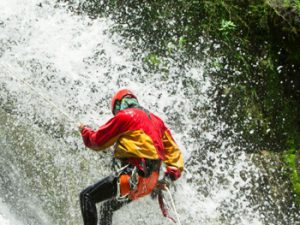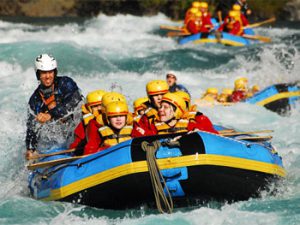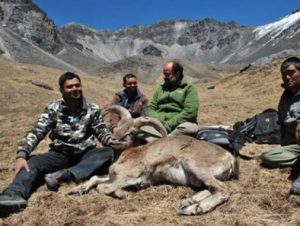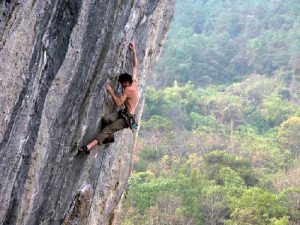Kathmandu Valley:
The capital of Nepal is named after a medieval pagoda “Kasthamandap”- wooden house. KathmanduValley – the home of the ancient and sophisticated Newari cultures. The Newars are the indigenousinhabitants of the valley. The valley has more UNESCO world heritage sites to offer than any country at asingle place. Within 650 Sq Km it consists of three main cities of great historical and cultural interest-Kathmandu, Patan and Bhaktapur.
Kathmandu Durbar Square
It is easy to be overwhelmed by the seemingly uncountable monuments in Kathmandu Durbar suare. The house of the Living Goddess, the ferocious Kal Bhairav, the Red Monkey God, andhundreds of erotic carvings are a few examples of sights at the Square! The buildings here arethe greatest achievements of the Malla dynasty and they resulted from the great rivalry existing between the three palaces of Kathmandu, Patan and Bhaktapur. The Valley was divided among the children of Yakshya Malla. For visitors today, and for the Nepalese, it was serendipitous that they, and later their off-springs, began an artistic warfare trying to outdo each other in the splendid constructions. Kings copied everything their neighbors built in an even grander style. A visitor who wanders around the Square will see a round temple in the pagoda architectural style, the temple of Goddess Taleju (who played dice with King Jay Prakash Malla), and an image of Shiva and Parvati sitting together among the many monuments. The Square is teeming with colorful life. Vendors sell vegetables, curios, flutes and other crafts around the Kasthamandap rest house. This rest house is said to have been built with the wood of a single tree and is the source from which the Kathmandu Valley got its name. Nearby are great drums which were beaten to announce royal decrees. All wood carvings, statues and architectures in this area are exceptionally fine, and Kantipur Durbar Square is amongst the most important sights for travelers to see. Hanuman Dhoka Palace Complex consists of a huge Royal Square imposing a tremendous variety of temples dedicated to different Hindu Gods and Goddesses. Most of the buildings we
see here date from the 15 th to 18 th century.
Some of the important monuments to be seen here are:
1. Taleju Temple - the tallest of all structures built by King Mahendra Malla in 1549 A.D.
2. Jagannath Temple - built in the 16 th century, known for its fascinating erotic figures carved in
the wooden struts along the eaves.
3. Kal Bhairav - one of the largest stone idols in Kathmandu representing the terrifying aspects
of Shiva.
4. Statue of King Pratap Malla in the praying gesture to Digu Taleju the royal family deity right
across.
5. Kumari Ghar- 17 th century Kumari temple, an example of the highly developed Nepalese
temple craft.
6. Kasthamandap- built from the timber of a single tree. ( Destroyed after earthquake)
Things to do in Kathmandu:
There are many very old Temples and Shrines and people lives closer to them. Tourist can just walk down to streets of Ason ( The oldest Market place), Jhochhen and of course Thamel ( Tourist Area). At Ason, almost everything can be found for daily consumption goods in reasonable price.
Nepal was discovered by Hippie in 60's in terms of tourism for international market and the first tourist destination was Jhochhen. Still now, it has its own charm that attracts many international tourist and teenagers of Kathmandu.
Thamel: One must visit Thamel to experience the night life of Kathmandu. Not only that, there are many international and local cuisine restaurants to satisfy the need of Tourist and Locals.
About Food: " Mo:mo" , it is Unofficially but almost a Nepalese national food.
Patan Durbar Square
The square boasts of many famous sites and unique architectures. Krishna Mandir in Patan Durbar Square was built to honor an incarnation of Vishnu. Krishna fought by the side of the Pandavs in the Mahabharat war to assure that truth would prevail. He was a favorite among the gopini cow girls. His temple is the best example of stone architecture in Nepal. Scenes from the Mahabharat, Asia's greatest mythological war is carved on the temple.
Things to do in Patan:
There are many very old Temples and Shrines and people lives closer to them. Tourist can just walk down to streets of Patan durbar. You can observe handmade metal status on inner streets of Patan.
About Food & Drinks: Local Mo:mo can be found almost every restaurants. You can find homemade
alcoholic beverages such as Rice Beer ( Tha:wo) and Rice made spirit ( Yae: la)
Bhaktapur Durbar Square
Bhaktapur Durbar Square is a conglomeration of pagodas and shikhar-style temples grouped around a fifty-five window palace of brick and wood. The square is one of the most charming architectural showpieces of the Valley as it highlights the ancient arts of Nepal. The golden effigies of kings perched on the top of stone monoliths, the guardian deities looking out from their sanctuaries, the wood carvings in every palace-struts, lintels, uprights, tympanums, gateways and windows-all seem to form a well-orchestrated symphony.
Things to do in Bhaktapur:
There are many very old Temples and Shrines and people lives closer to them. Tourist can just walk down to streets of Bhaktapur durbar square. You can observe Pottery being made at Pottery Square.
About Food & Drinks: Curd made in Bhaktapur is very popular in whole Kathmandu Valley. Local name is JU JU DHAU which means Kings Curd. You can find homemade alcoholic beverages such as Rice Beer (Tha:wo) and Rice made spirit ( Yae: la)
Boudha Stupa
Boudha is amongst the largest stupas in South Asia and it has become the focal point of Tibetan Buddhism in Nepal. The white mound looms thirty-six meters overhead. Many people believe that Boudha Stupa was constructed in the fifth century, but any definite
proof is yet lacking. The stupa is said to entomb the remains of Kashyap Buddha who is venerable both to Buddhists and Hindus. One legend has it that a woman requested a Valley king for the donation of ground required to build a stupa. She alleged she needed land covered by one buffalo's skin and her wish was granted by the King. She cut a buffalo skin into thin strips
and circled off a fairly large clearing. The king had no choice but to give in to her proposal by presenting the land expedited. The Boudha area is a visual feast. Colorful thangkas, Tibetan jewelries, hand-woven carpets, masks and khukuri knives are sold in the surrounding stalls. Smaller stupas are located at the base. Lamaseries, curio shops and restaurants surround Boudha. Conveniently situated restaurants with roof-top patios provide good food and excellent views of Boudha sanctuary.
Pashupatinath Temple
Pashupatinath is the holiest Hindu pilgrimage destination in Nepal. There are linga images of Shiva along with statues, shrines and temples dedicated to other deities in the complex. A temple dedicated to Shiva existed at this site in 879 A.D. However, the present temple was built by King Bhupatindra Malla in 1697 A.D. A gold-plated roof, silver doors and wood carvings of the finest quality decorate the pagoda construction. Guheswari Temple, restored in 1653 A.D , represents the female "force". It is edicated to Satidevi, Shiva's first wife, who gave up her life in the flames of her father's fire ritual.
Swayambhu Mahachaitya
The history of the Valley, according to the legends, begins with Swayambhu or "The Self-Existent". In times uncharted by history, Bodhisattwa Manjushree came across a beautiful lake during his travel. He saw a lotus that emitted brilliant light at the lake's center, so he cut a gorge in a southern hill and drained the waters to worship the lotus. Men settled on the bed of the lake and called it Kathmandu Valley. From then on, the hilltop of the Self-Existent Lord has been an auspicious place.
Changu Narayan Temple
Narayan, or Vishnu, is the preserver of creation to Hindus. His temple near Changu hill village is often described as the most ancient temple Kathmandu Valley. A fifth century stone inscription, the oldest to be discovered in Nepal, is located in the temple compound and it tells of the victorious King Mandev. The temple now covers sixteen hundred years of Nepalese art history. The temple, built around the third century, is decorated by some of the best samples of stone, wood and metal craft in the Valley. In the words of one tourist guide, "When you look upon Champak Narayan, you observe the complete cultural development of the Valley."
On the struts of the two-tiered Champak Narayan Temple, are the ten incarnations in which Narayan destroyed evil-doers. A sixth-century stone statue shows the cosmic form of Vishnu, while another statue recalls his dwarf incarnation when he crushed the evil king called Bali. Vishnu as Narsingh disemboweling a demon is particularly stunning. The western bronze doors sparkle in the evening sunlight, dragons decorate the bells and handsome devas stare from the walls. Garud, half man and half bird, is the steed of Vishnu and his life-sized statue kneels before the temple. The favorite of many tourists is the statue of Vishnu sitting astride his steed.


 Licensed hunting is allowed in the Dhorpatan Hunting Reserve in the western part of Nepal. Dhorpatan is the prime habitat of the blue sheep, ghoral, serow, Himalayan tahr, black bear, pheasant, and partridge. Endangered species here include the cheer pheasant and red panda. Hunting is allowed only after acquiring a license from the Department of National Parks and Wildlife Conservation (DNPWC) in Kathmandu and is restricted to certain times in a year. Most hunting trips are planned in spring and the onset of autumn, from February through April and August through October respectively.
Licensed hunting is allowed in the Dhorpatan Hunting Reserve in the western part of Nepal. Dhorpatan is the prime habitat of the blue sheep, ghoral, serow, Himalayan tahr, black bear, pheasant, and partridge. Endangered species here include the cheer pheasant and red panda. Hunting is allowed only after acquiring a license from the Department of National Parks and Wildlife Conservation (DNPWC) in Kathmandu and is restricted to certain times in a year. Most hunting trips are planned in spring and the onset of autumn, from February through April and August through October respectively.